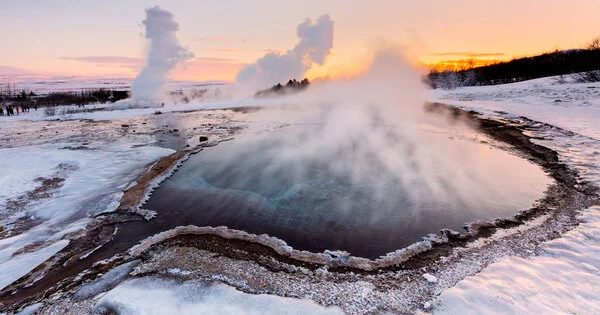There are quantum fluids in quantum mechanics, such as superfluids and Bose-Einstein condensates, that exhibit unique properties at extremely low temperatures. These quantum fluids have the ability to flow without viscosity, which means they have no resistance to motion. This behavior is caused by the system’s reliance on quantum effects.
Heat can melt solids, but it can also form supersolid structures in the quantum world: an experimental team demonstrated how a quantum liquid can form supersolid structures by heating. The researchers created the first phase diagram for a supersolid at a finite temperature.
Supersolids are a relatively new and exciting research field. They have both solid and superfluid properties at the same time. In 2019, three research groups, led by Francesca Ferlaino from the Department of Experimental Physics at the University of Innsbruck and the AW Institute for Quantum Optics and Quantum Information (IQOQI) in Innsbruck, were able to demonstrate this state for the first time beyond doubt in ultracold quantum gases.
Our data suggested that an increase in temperature promotes the formation of supersolid structures. This surprising behaviour was an important boost to theory, which had previously paid little attention to thermal fluctuations in this context.
Claudia Politi
Francesca Ferlaino’s team studied the life cycle of supersolid states in a dipolar gas of dysprosium atoms in detail in 2021. “Our data suggested that an increase in temperature promotes the formation of supersolid structures,” Claudia Politi of Francesca Ferlaino’s team explains. “This surprising behaviour was an important boost to theory, which had previously paid little attention to thermal fluctuations in this context.”
When heated, quantum fluids typically transition to a normal fluid state, where viscosity becomes non-negligible. The critical temperature is the temperature at which this transition occurs. This transition from a quantum fluid to a normal fluid, on the other hand, is not equivalent to the transition from a liquid to a solid state.

To investigate the effect of thermal fluctuation, the Innsbruck scientists collaborated with a Danish theoretical group led by Thomas Pohl. They created and published in Nature Communications a theoretical model that explains the experimental results and supports the hypothesis that heating the quantum liquid can result in the formation of a quantum crystal. According to the theoretical model, as the temperature rises, these structures form more easily.
“With the new model, we now have for the first time a phase diagram that shows the formation of a supersolid state as a function of temperature,” Francesca Ferlaino is overjoyed. “The surprising behavior, which contradicts our everyday observation, arises from the anisotropic nature of the dipole-dipole interaction of the strongly magnetic atoms of dysprosium.”
External factors, such as the introduction of impurities or changes in pressure, are usually required for a quantum liquid to solidify. It is possible to induce the solidification of certain quantum liquids by manipulating these factors. Researchers, for example, have been able to create a transition from a superfluid to a solid-like state in certain experiments involving ultracold atomic gases by increasing the strength of the interactions between the atoms or confining the gas in a periodic lattice.















